Italian vs. French Macarons
To finish up the little mini study we have done on French Macarons lately, I thought I’d answer the question that several of you have asked me– what’s the difference between Italian and French Macarons (basically, what’s the difference between French and Italian meringue?). And apparently, inquiring minds also want to know . . . what method do I prefer?
*creepy theater music swells in the background . . . * YOU WANT TO KNOW MY SECRETS?????? WHO DARES APPROACH!!!!!
bwahaha sorry. 😉
So just for you, I thought I’d break down the two macaron making methods. Both have pros and cons, and it really comes down to which method you are most comfortable with. Both of them take some finesse and some good, old-fashioned practice. But both produce beautiful, tasty, slightly different shells. Let’s talk about each one and the pros and cons/difficulty levels, and you can decide which one you like best. 🙂

I personally use the French Macaron method, pretty much exclusively. The only time I make Swiss or Italian meringue is if I say, “You know what, that info is getting rusty and dusty in my brain. I should brush up on it and see if I don’t like it better now than the last time I tried it.” (I never do).
The French method is the one that I cover in all of my Macaron Making Tutorials, but here is a brief refresher. To make French style macarons you begin with cold egg whites, sugar, and cream of tartar. You whip the egg whites in the bowl of your stand mixer by using the whisk attachment, until you get stiff peaks. Although I use a stand mixer, this type of meringue also lends itself well to using a hand mixer, if that’s all you have. The cold ingredients are also much safer around kids (another reason I use this method) and more forgiving to first time macaron makers since the sugar is added, cold, to the egg whites, rather than through a boiling syrup dependent on a specific temperature.

After you beat your egg whites to stiff peaks, fold in your sifted powdered sugar/almond flour until you get proper macaronage. This macaronage step is also much easier when the ingredients are cold, IMO.
What– you don’t like whisking boiling hot ingredients at a million miles an hour with little kids hanging on your legs asking for more goldfish crackers?
Me neither.

Pipe your macarons and let them form a dried “skin” so that they will not crack in the oven, but rise up and make the adorable, ruffly little “feet.”

Fill and decorate when they are done.
French Macaron Pros:
All ingredients are room temperature/cool
A hand mixer may be used
You can take a little more time with these. The ingredients don’t have to be mixed “Right this second” as Italian meringue does (more on this later).
French Macaron Cons:
The macaronage step is quite tricky. One or two strokes too many or too few will give you “macaron nipples” or little puddles of misshapen mistake macarons. It takes a lot of practice to know just when your batter is “right,” but after you experience “correct” macaron batter, it’s much easier to tell in the future when to stop folding the ingredients because you now know what to look for.
The French meringue is a lot more delicate than Italian meringue, which makes it easier to get deflated or cracked shells, uneven feet, or browned, discolored tops when you are first starting out.
Due to the whipping of the egg whites, alone, at the beginning, these shells are more prone to air bubbles. If you don’t dislodge all the air bubbles by slamming the trays prior to resting, your macarons will have an “acne” appearance, as the air bubbles bake to the surface in the final shells.

Now. Let’s talk about the Italian Meringue method. Sigh. You asked for it. Get out all the equipment you have in your kitchen and prepare to wash EVERY dish you possess. Just kidding. Well, sort of.
Unlike French Meringue, where the sugar is added cold to the egg whites prior to whipping, Italian Meringue sugar is in the form of a liquid syrup, which must be heated to 240 degrees before adding it to the egg whites and whipping. There are many recipes for Italian Macarons out there, but most of them add a little bit of water to the sugar prior to heating it (as opposed to straight sugar being melted, which will often cause caramelization rather than strict melting).

You definitely need a candy thermometer for Italian meringue, because when that sugar hits 240, you grab it and take it off the heat IMMEDIATELY. Sugar work is very tricky and very precise. I have ruined many caramel and candy recipes because I looked away from that thermometer for a second when it was getting close to the temperature, and then my sugar went over temperature, ruining the consistency I needed. Watch your thermometer closely, and when it gets to about 230, start whipping your egg whites so that they will be medium peaks by the time your sugar reaches 240.
*NOTE: The egg whites should reach medium peaks BEFORE the syrup is done. The egg whites can be kept “circling” slowly, waiting for the sugar, but the sugar cannot wait when it is ready. The egg whites are the husband and the sugar is the pregnant wife. He can wait. But when she’s ready, she AIN’T WAITING FOR NOBODY. 😉
If you are coloring your Italian macarons, add the gel food coloring when the sugar reaches about 230 degrees (at the same time you begin to whip your egg whites).

Bingo!!!! Now, when you see 240 (my thermometer looks a little off because I took the picture looking down, but it was precisely 240), it’s go time! Don’t hesitate even 30 seconds, or it will be too hot and go from soft ball to hard ball stage, and your sugar will be ruined. If you overheat your sugar syrup or wait too long to add it, you’ll have to start over (another reason I don’t prefer Italian meringue. I dislike starting over, making me wash all the dishes I possess TWICE. Um, no thank you).

Because you were good little students and started your egg whites whipping when your sugar syrup reached 230, they are now medium peaks (*almost* stiff peaks). Immediately dump your 240 degree sugar syrup down the side of the bowl while running the mixer at high speed so that the sugar incorporates immediately and doesn’t curdle the eggs. PS. Because I paused to take this photo for you, I ruined this batch of meringue and had to make another one. I had to confront the unthinkable and wash all the dishes I possessed TWICE just to make this for you. That’s how finicky Italian meringue is. I did that for YOUUUUUUUUUUUUU. I washed dishes for 35 years FOR YOU. You’re welcome.
Unlike French Meringue, you can’t really do Italian meringue without a stand mixer. It’s too dangerous to try to balance a hand mixer, a hot sugar pot, and a slippery bowl, all while the aforementioned kids climb on your legs asking for goldfish crackers and you glance worriedly at the towering stack of dishes in the sink that seems to be multiplying like IRS men at tax time. So for this reason, also, I don’t recommend beginners to use Italian meringue. There is too much of a chance of getting burned, or messing up if you hesitate too long, and then you have to start over.

Ok here is my second batch of Italian meringue (after my embarrassing failure in the first one because I hesitated and took a photo. Then I washed dishes for 50 years to get ready for my second batch. Sigh). When you add the 240 degree sugar syrup to your “almost stiff” peaks, whip the mixture on high for 3-4 minutes until the bowl cools down and you get stiff peaks that look more glossy than French meringue. Your mixture should look sumptuous and pillow soft . . . almost like marshmallow. French meringue is kind of wet and bubbly looking. Italian meringue looks like little clouds of heaven.

Next, incorporate your sifted powdered sugar/almond flour the same way as you complete the “macaronage” process in French meringue. A quick note– if you have any sugar syrup that “froze” to the side of the bowl (as, ahem, yours truly did), just ignore that and don’t try to incorporate it into your finished meringue. Frozen syrup will ruin a meringue, just like a frozen heart will ruin a relationship. Yeahhhhh. Another reason I don’t care for Italian Meringue. There are pitfalls at every turn!!!! 😉

I will say that the Italian macaron batter does have a certain “je ne sais quoi.” Or, I suppose since these are ITALIAN macarons and not French, I should say “qualcosa che non posso descrivere.” Why, yes, I am learning Italian. Why, yes, I totally cheated and looked that up. You’re welcome.
Anyway, the Italian meringue is so shimmery and shiny. This is like, what it would look like if a unicorn made cookies or something. I admit . . . Italian meringue is a pain, but that sparkling, pillowy soft marshmallow look is pretty awesome and *almost* worth all the pain and suffering and COUNTLESS DISHES.
Almost.

Pipe your shells on the silpat and rap the sheets a few times to dislodge the air bubbles. The interesting thing about Italian macarons is that they don’t have nearly as many air bubbles, so you won’t have as much “popping” to do with your toothpick. Also, the finished shells will be smoother, because fewer air bubbles hang out in there. You still have to let the shells rest and develop the matte “skin” before baking so that they develop those nice little feet.
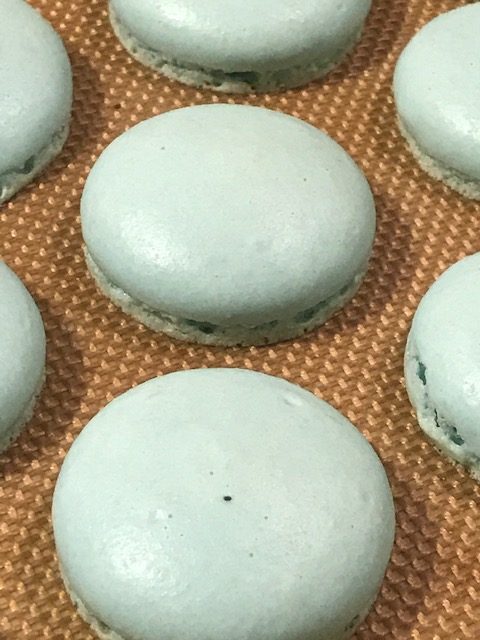
Mmmm. This is the one and only thing that keeps me coming back to Italian Macarons. Look at how smooth those shells are. Italian macaron shells, to me, have the incredible, smooth tops that French Macarons *just* miss. The macaron “feet” on Italian shells also tend to be a little taller and straighter, as opposed to French macarons, where the feet are a little more ruffly and not as tall.

The Italian shells are who you want for your basketball team. Look at that height! MAMA MIA!!!!

I had some leftover French shells, and I stuck them into the same container in the fridge with my big ‘ole Italian shells. See how much “shorter” the (green) French ones are than the blue Italian ones? Also take a look at the feet of each kind of shell. The French foot is kind of ruffly. There are more air bubbles in it. The Italian macarons have a taller foot (another reason the overall shell is taller) that isn’t as ruffly, and has fewer air bubbles.
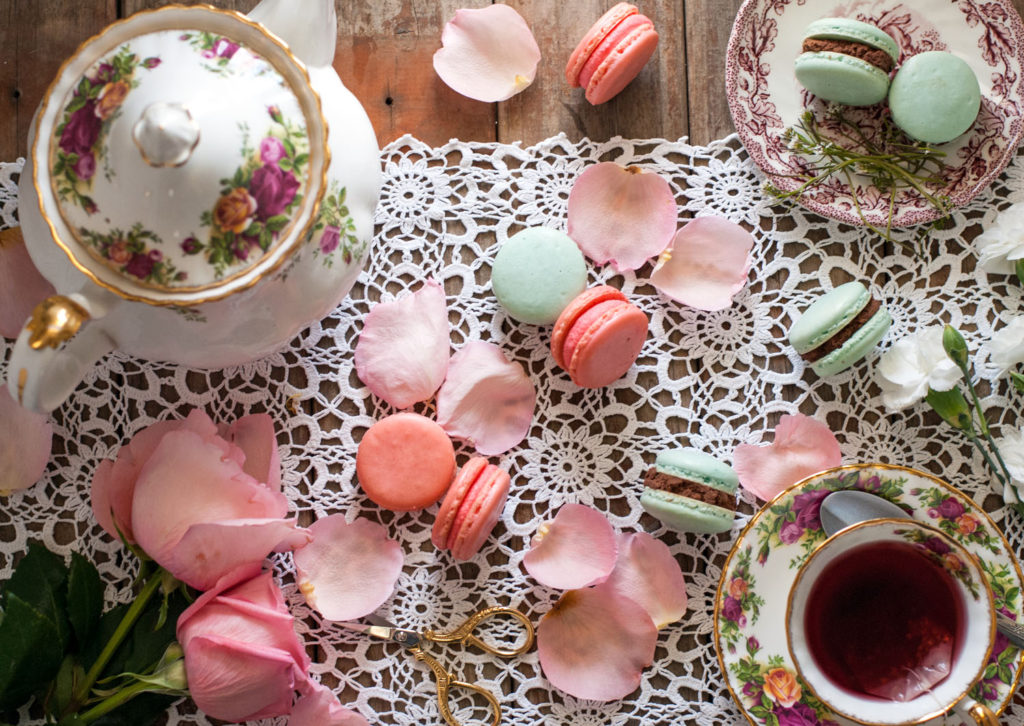
So let’s see what we learned about Italian Macarons:
Italian Macaron Pros:
Incredibly Smooth Shell
Taller Macaron
Fewer Air Bubbles
Italian Macaron Cons:
You must have a stand mixer to make these
Much more difficult to get timing absolutely correct with boiling sugar solution
More dishes to clean up (why yes, since I am the dishwashing machine in my house, this is a big con 😉
Requires a candy thermometer
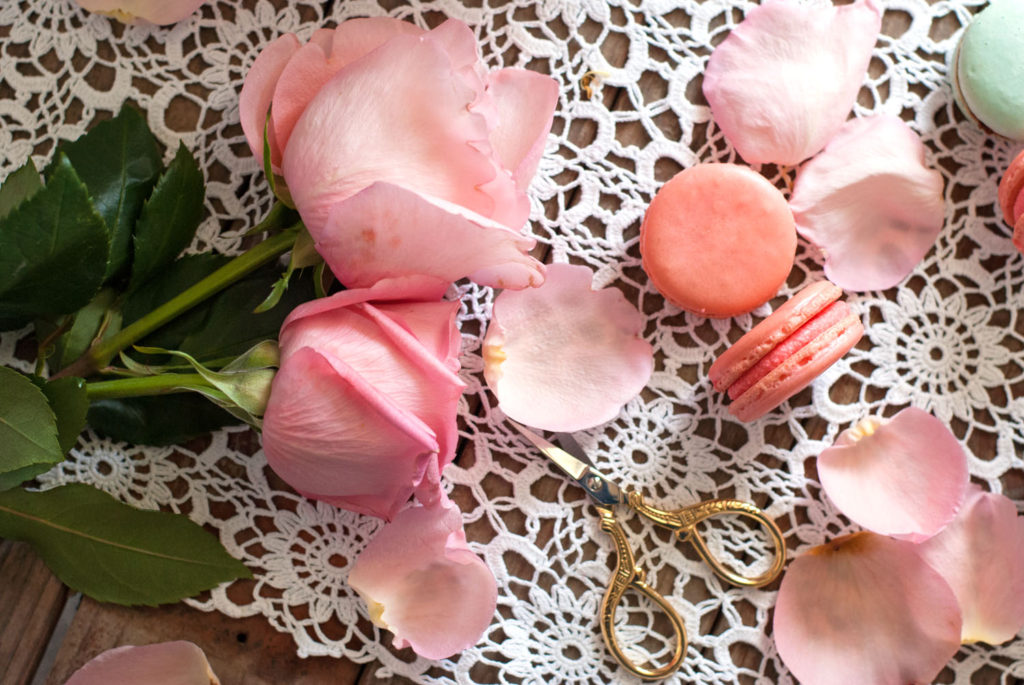
I always hesitate to tell people that “these are the world’s best brownies,” or “these are the best chocolate chip cookies EVER!!!” Because everyone has a different idea of what is good, and only you know what you like best. It’s more helpful, I think, to describe the differences of each method, and then you can decide for yourself which one you prefer.
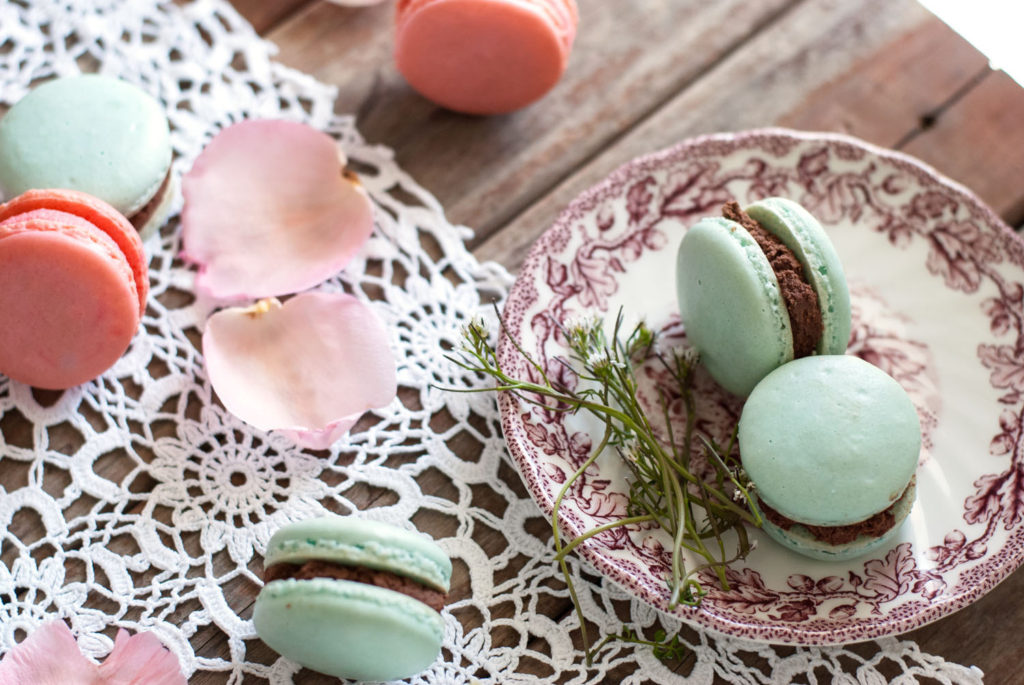
The best way to decide which macaron method you like best is to try them both. AKA, EAT MORE COOKIES!!!! (Um . . . why does she keep shouting? Ooops. Sorry. I am passionate about macarons 🙂
Everything gets better with practice, so I would recommend trying the French method first (mainly because it doesn’t involve scorching hot, boiling liquid), and then practice that a few times until you’re comfortable with it before you try the Italian kind. But either way, keep at it. I’ve never heard of anyone who makes macarons perfectly the first time. Macarons are literally the most difficult cookie on the planet to make. I bet I’ve ruined millions of these little gals. But don’t worry. Keep practicing and before you know it, you’ll get it. And then you’ll be glad that you didn’t give up. I speak from experience.
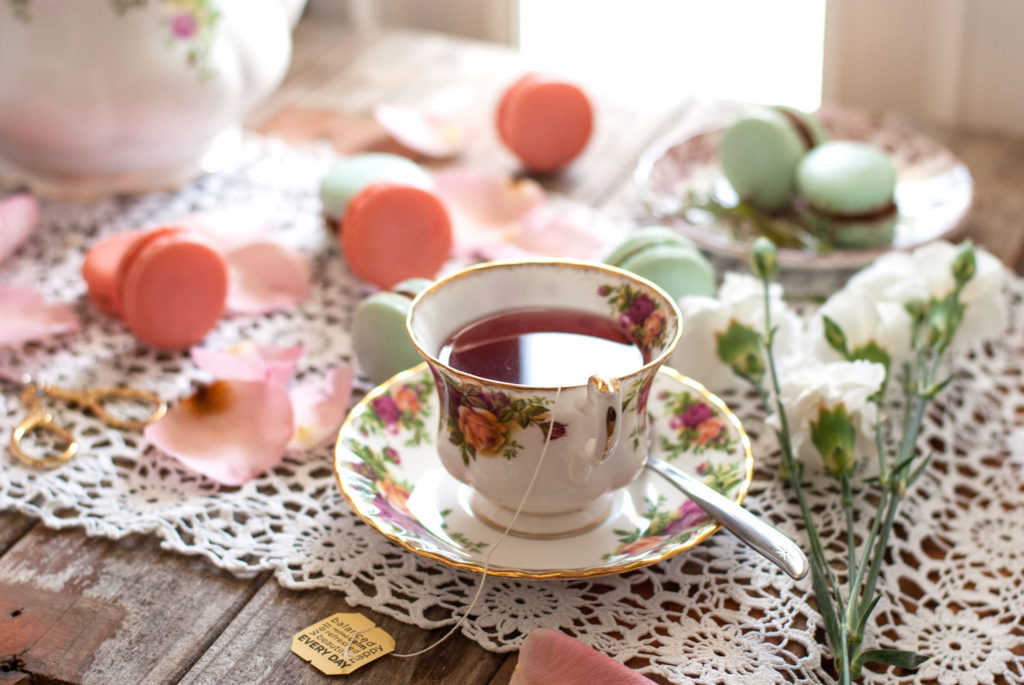
I tried to make macarons so many times and failed. I almost gave up. And then, maybe because of my Scots/Irish blood, I decided that I was too stubborn to quit. So I tried again.
And again.
And again.
Annnnnnnd again. That was a LOT of dishes, folks. But I kept going.
And then one day, I did it. And I never looked back.
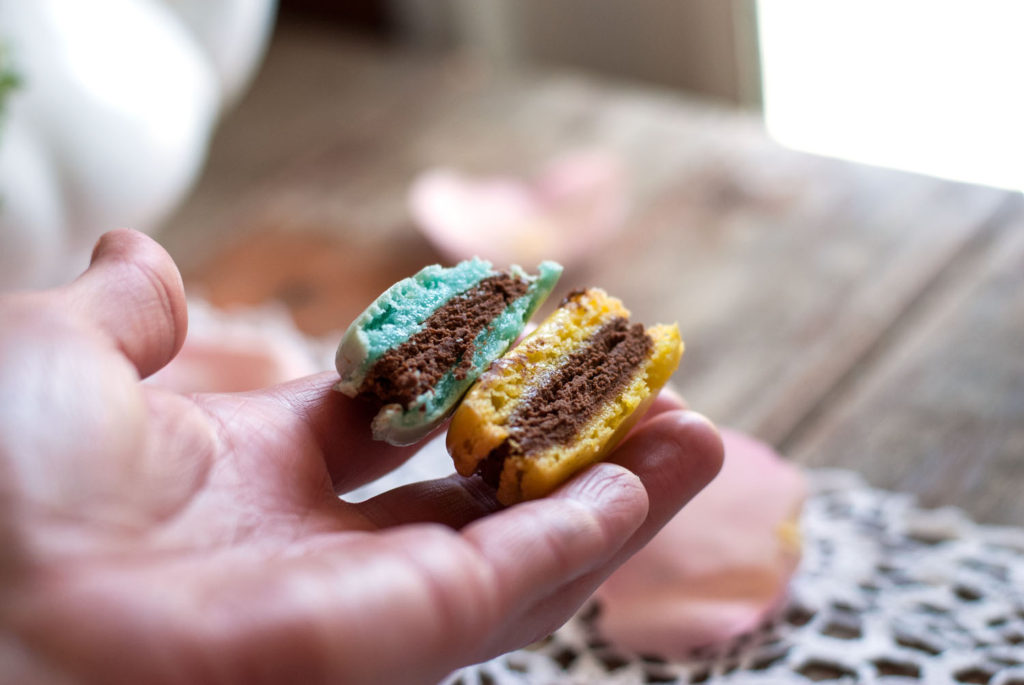
And no matter how you to choose to make them, and no matter how your shells look at the end, your macarons will be DEEEELICIOUS (yes, even the mistakes are delicious. It’s like God decided to throw us a bone on the quest for mastery of this all too ridiculously difficult cookie). I cut a blue Italian one and a yellow French one in half for you to see the insides. (By the way, cutting these kind of squishes them, so I recommend just biting into them with wild abandon and skipping the “try to cut this beautifully and show the inside” step). 😉
Can you tell the difference? MMmmmmmmm. *chomp chomp.*
Neither can anyone else. 😉 Don’t stress over which method is “best.” However you get there, in the end, your results will be beautiful and delicious.
You did it. And I’m just so proud of you.

Disclosure: This post may contain affiliate links, which just means that we get a few pennies if you purchase through our link. I never recommend products that I don't personally use and love. Thanks!
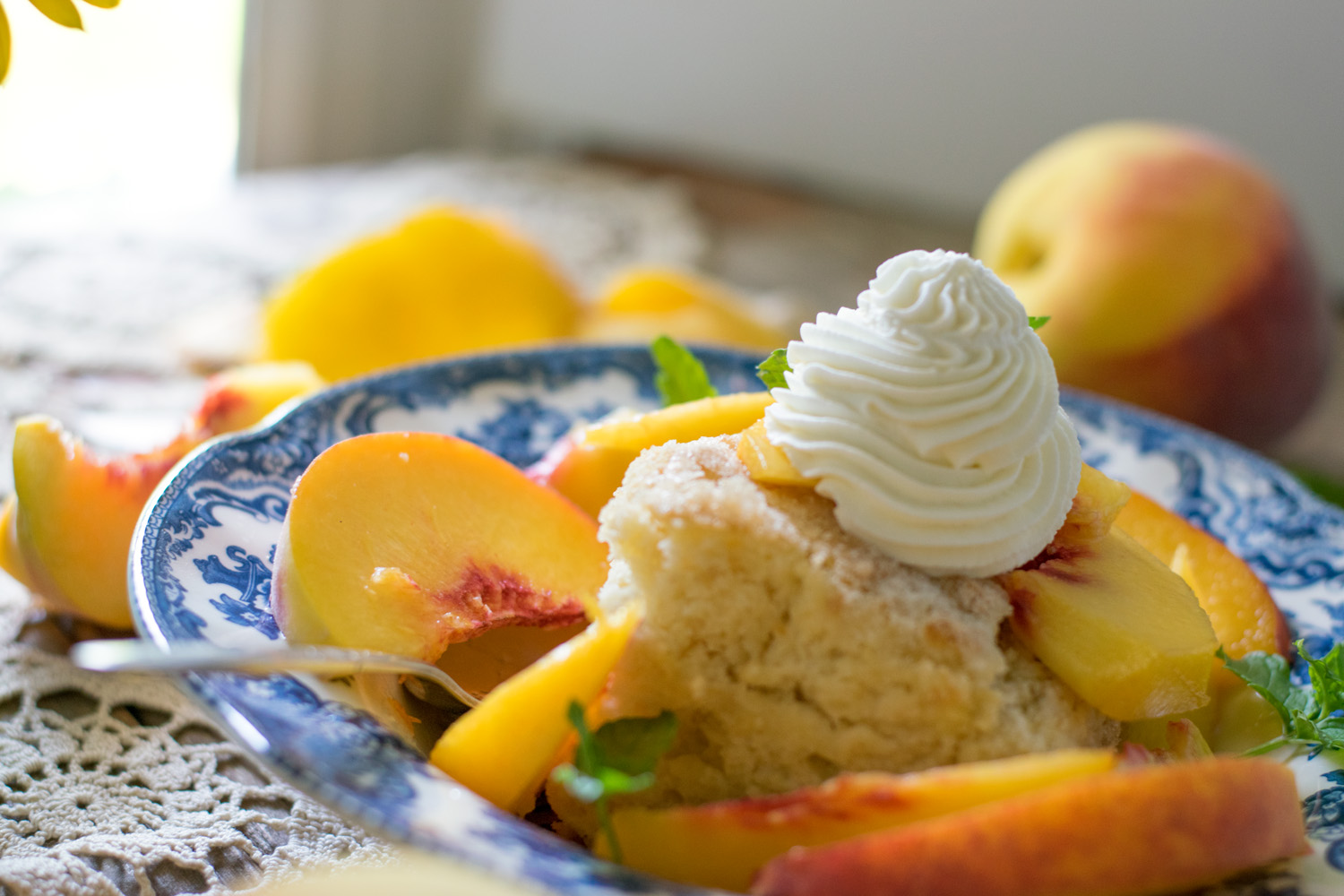
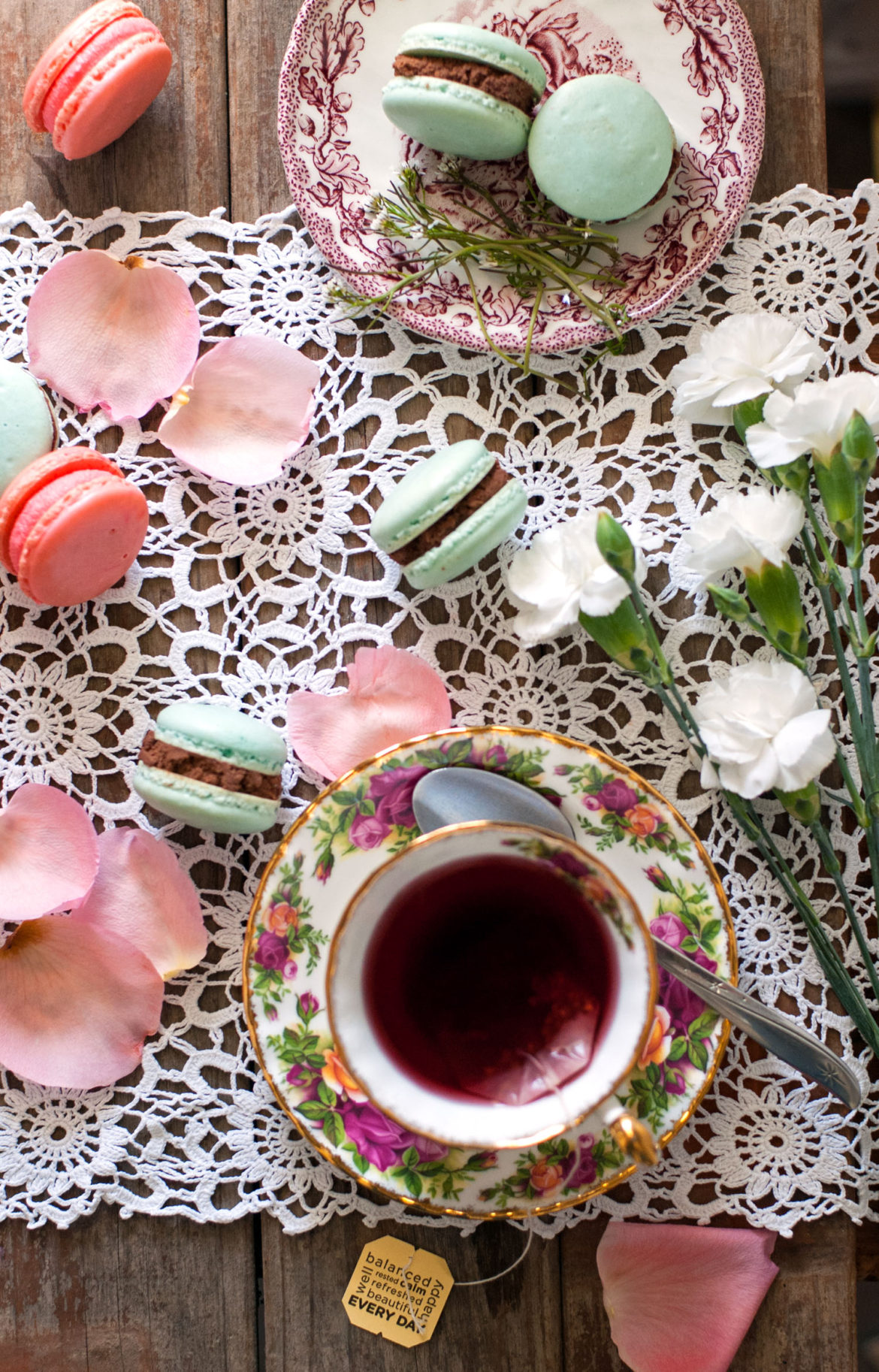


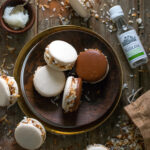
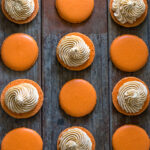
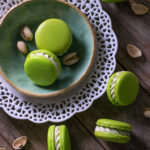

I was wondering, can I take any French macaron recipe and just adjust it to use the Italian method? I prefer the Italian method when I’m making them as gifts, since they present so beautifully, but most of my favorite recipes are for the French method. Thank you
Hi Jessica– great question. Unfortunately you can’t “transform” a French recipe into an Italian one, because the Italian ratios are different and include water (to be used in the sugar syrup). The French recipes have no water. Hope this helps! — Emilie
Informative and funny.
You did it. And I’M just so proud of YOU. Lovely article. Thank you.
Haha thank you <3 It means a lot you took time to read and comment. Thank you 🙂